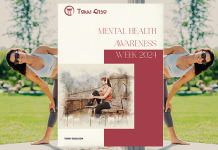Good communication is so vital In today’s fast-paced world and the ability to “Reading the Room” is more crucial than ever. It’s not just about gauging the general mood or tone of a conversation; it’s about understanding the diverse needs and communication styles of everyone present, especially those with ADHD. At Torri Enso we believe in the power of inclusivity and the importance of adapting our social interactions to support every individual’s unique needs.
The term “Reading the Room” refers to the ability to understand and interpret the mood, dynamics, and unspoken feelings of a group of people in a particular setting. It involves picking up on social cues, body language, the tone of conversation, and other non-verbal signals to gauge the overall atmosphere. This skill is crucial for effective social communication, as it helps individuals to tailor their behaviour and responses to fit the context and expectations of the group.
Benefiting from Reading the Room
- Improve Your Emotional Intelligence: By becoming more attuned to social cues and the emotions of others, you can improve your emotional intelligence, leading to better interpersonal relationships.
- Enhance Communication Skills: Understanding the room allows for more tailored communication, making your messages more effective and well-received.
- Make Informed Decision: In group settings, reading the room can help you make decisions that are more likely to be accepted and supported by others.
Positive Aspects of Reading the Room
- Enhanced Social Interaction: Being able to read the room can lead to more meaningful and effective interactions, as it allows a person to connect with others in a way that respects their feelings and perspectives.
- Conflict Avoidance: By understanding the mood and dynamics, one can steer conversations away from potentially sensitive or controversial topics, reducing the likelihood of conflict.
- Leadership Skills: Leaders who can read the room are often more effective, as they can adapt their communication and leadership style to meet the needs of their team, inspiring trust and respect.
- Empathy Development: This skill fosters empathy, enabling individuals to understand and share the feelings of others, which is crucial for building strong personal and professional relationships.
Negative Aspects of Reading the Room
- Misinterpretation: There’s a risk of misinterpreting signals, leading to incorrect assumptions about others’ thoughts or feelings.
- Overthinking: Relying too much on trying to read the room can lead to overthinking and anxiety, especially if one is unsure about the accuracy of their interpretations.
- Manipulation Concerns: Some may view the ability to read the room as manipulative, especially if used to influence others unduly.
Understanding ADHD in Social Dynamics
Attention Deficit Hyperactivity Disorder (ADHD) affects millions worldwide, influencing their social interactions, communication styles, and overall experience in group settings. Individuals with ADHD might face challenges such as maintaining attention, managing impulsivity, and navigating social cues—factors that can significantly affect their ability to “read the room.”
Why Adjusting Our Approach Matters?
Recognising and adjusting our approach to include those with ADHD isn’t just about empathy; it’s about enriching our social environments with diverse perspectives and strengths. By becoming more aware and adaptable, we can foster a more inclusive and understanding community that values everyone’s contribution, regardless of their neurodiversity.
Here are strategies to compensate, appreciate, and adjust your approach to support them effectively:
Strategies for Supporting Individuals with ADHD
- Patience and Understanding: Recognise that individuals with ADHD may struggle with social cues and maintaining attention in conversations. Display patience and understanding if they interrupt, change topics abruptly, or seem distracted.
- Clear and Direct Communication: Use clear, concise, and direct communication. Individuals with ADHD may benefit from straightforward instructions or feedback to minimise misunderstandings.
- Structure and Predictability: Create a structured and predictable environment during interactions. This can help individuals with ADHD feel more at ease and focused during social interactions.
- Encourage Small Group Interactions: Large groups may be overwhelming. Encourage participation in smaller groups where they might feel more comfortable and less distracted.
- Highlight Strengths: Appreciate and highlight their strengths, such as creativity, enthusiasm, and the ability to think outside the box. Positive reinforcement can boost their confidence in social settings.
- Adapt to Their Communication Style: Pay attention to their preferred style of communication. Some may find direct conversations challenging and prefer written or electronic communication.
- Use Visual Aids and Reminders: Visual aids, lists, and reminders can be helpful in maintaining the focus of an individual with ADHD during conversations or group activities.
Challenges and Preparation
Challenges:
- Maintaining Attention: Keeping their attention during conversations or group activities can be challenging.
- Impulsivity: Impulsive comments or actions can disrupt social dynamics.
- Sensitivity to Criticism: Individuals with ADHD may be sensitive to criticism or negative feedback.
Preparation:
- Educate Yourself: Learn more about ADHD to understand the challenges and strengths associated with it.
- Develop Flexibility: Be prepared to adapt your communication style and expectations in real-time.
- Build a Supportive Environment: Work towards creating an inclusive and supportive environment that acknowledges and accommodates the needs of those with ADHD.
- Practice Active Listening: Show that you value their input and are interested in what they have to say, even if you need to gently guide the conversation back on track.
By adjusting your approach to “reading the room” with the inclusion and support of individuals with ADHD in mind, you can help facilitate their participation in social dynamics and communication. It’s about creating an environment where their unique perspectives and strengths are acknowledged and valued, while also providing the support they need to navigate the challenges they may face.
The Bottom Line
Reading the Room extends beyond mere observation—it’s about action. It’s about actively making room for all voices, especially those that might struggle to be heard. At Torri Enso, we’re committed to creating spaces where everyone, including those with ADHD, feels valued, understood, and supported.
Let’s embark on this journey of awareness and adaptability together. By embracing these principles, we not only enhance our ability of Reading the Room but also enrich our collective experiences, fostering a truly inclusive community.






